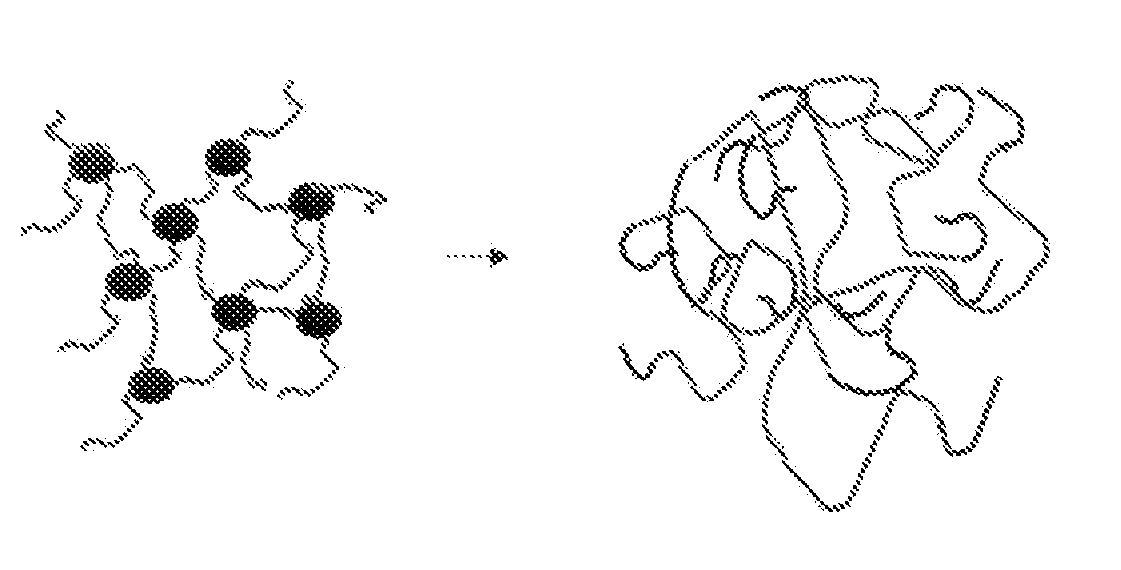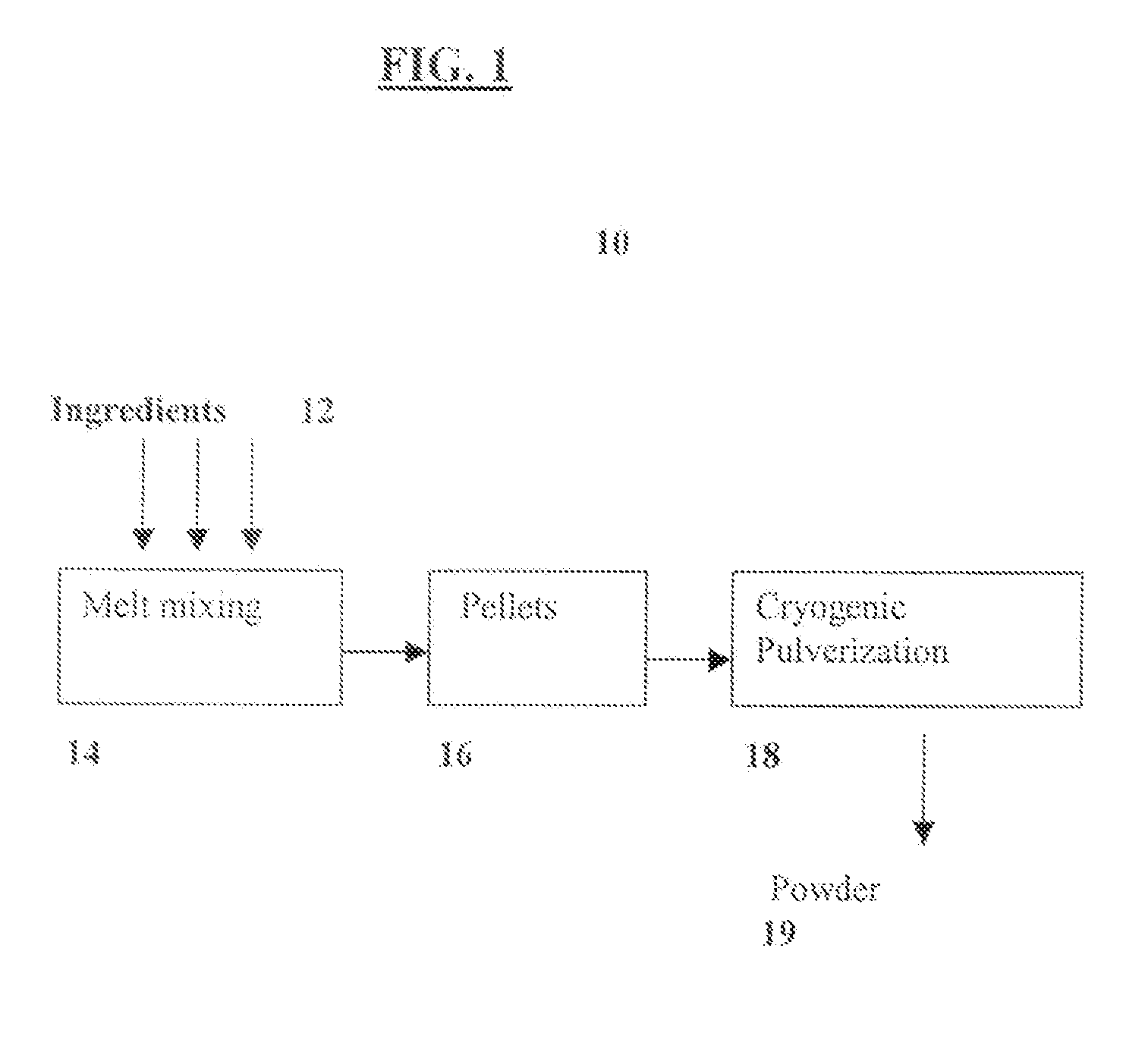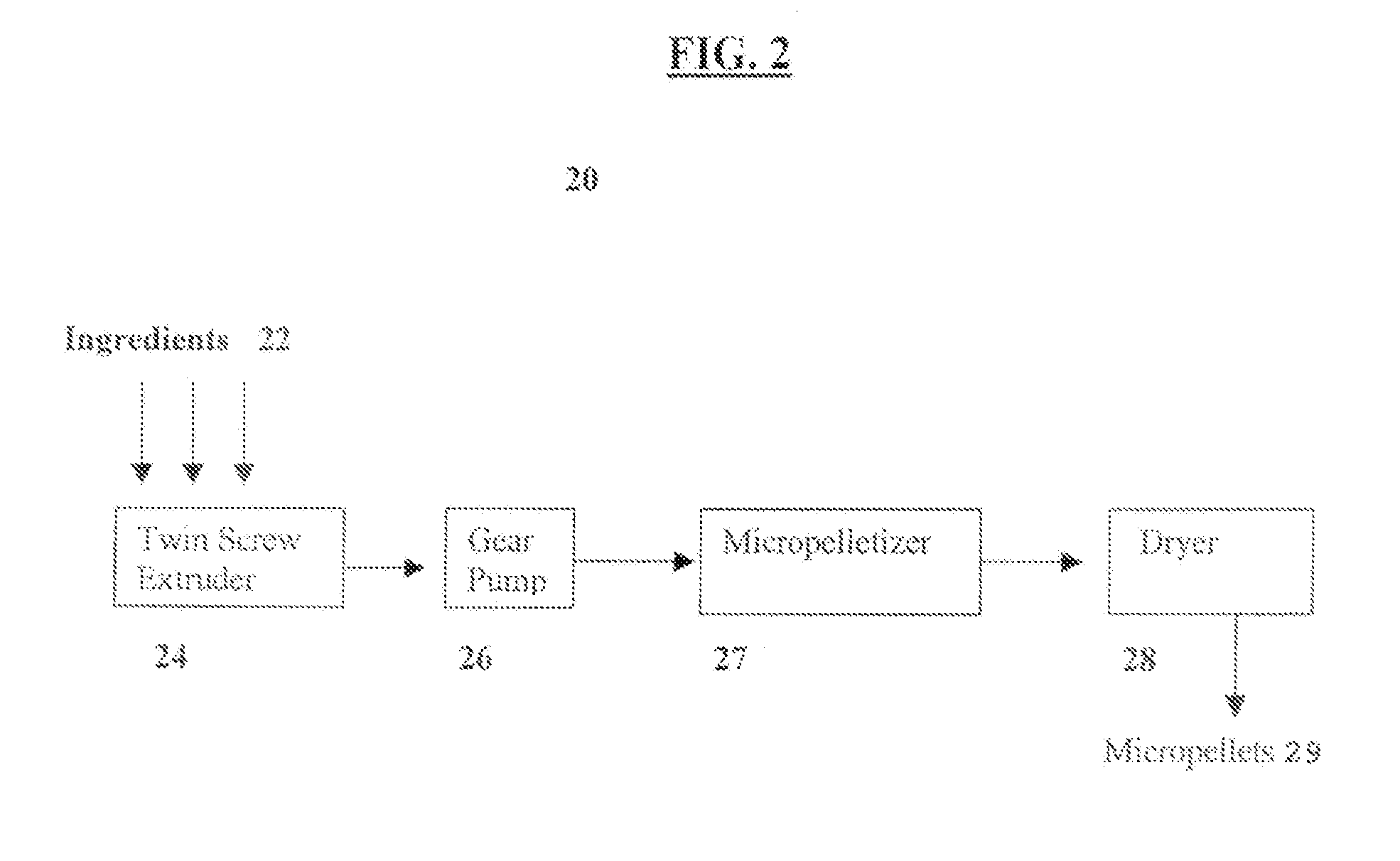Thermoplastic polyolefin compositions having improved melt viscosity and methods of making the same
- Summary
- Abstract
- Description
- Claims
- Application Information
AI Technical Summary
Benefits of technology
Problems solved by technology
Method used
Image
Examples
example 1
[0090] The following TPO composition were prepared by melt mixing as per Table 2 below. After processing into a powder the sample gave the test results as per FIG. 3 and 4.
[0091] Melt viscosity was measured by a parallel plate rheometer with an applied strain of 1 radiant per second in a temperature range of 180 to 260° C.
TABLE 2Materials / DescriptionABCDEFHydrogenated copolymer100%80%60.0%70.0%70.0%70.0%Polypropylene—20%40.0%30.0%30.0%30.0%Process Oil——10.0 PHR6.0 PHR8.0 PHR10.0 PHRColor Concentrate and———8.0 PHR8.0 PHR 8.0 PHRAdditives
[0092] As indicated in FIG. 3, the effect of the ODT shift is that at a given initial temperature, the initial melt viscosity is significantly decreased. The information given in FIG. 3 is for those compositions shown in Table 2 below. The copolymer (b), i.e. composition A, displays an ODT effect at high temperature such that the melt viscosity is high until approximately 240 degrees C. The addition of polypropylene (a) to (a) as shown for composit...
PUM
| Property | Measurement | Unit |
|---|---|---|
| Percent by mass | aaaaa | aaaaa |
| Percent by mass | aaaaa | aaaaa |
| Percent by mass | aaaaa | aaaaa |
Abstract
Description
Claims
Application Information
 Login to View More
Login to View More - R&D
- Intellectual Property
- Life Sciences
- Materials
- Tech Scout
- Unparalleled Data Quality
- Higher Quality Content
- 60% Fewer Hallucinations
Browse by: Latest US Patents, China's latest patents, Technical Efficacy Thesaurus, Application Domain, Technology Topic, Popular Technical Reports.
© 2025 PatSnap. All rights reserved.Legal|Privacy policy|Modern Slavery Act Transparency Statement|Sitemap|About US| Contact US: help@patsnap.com



